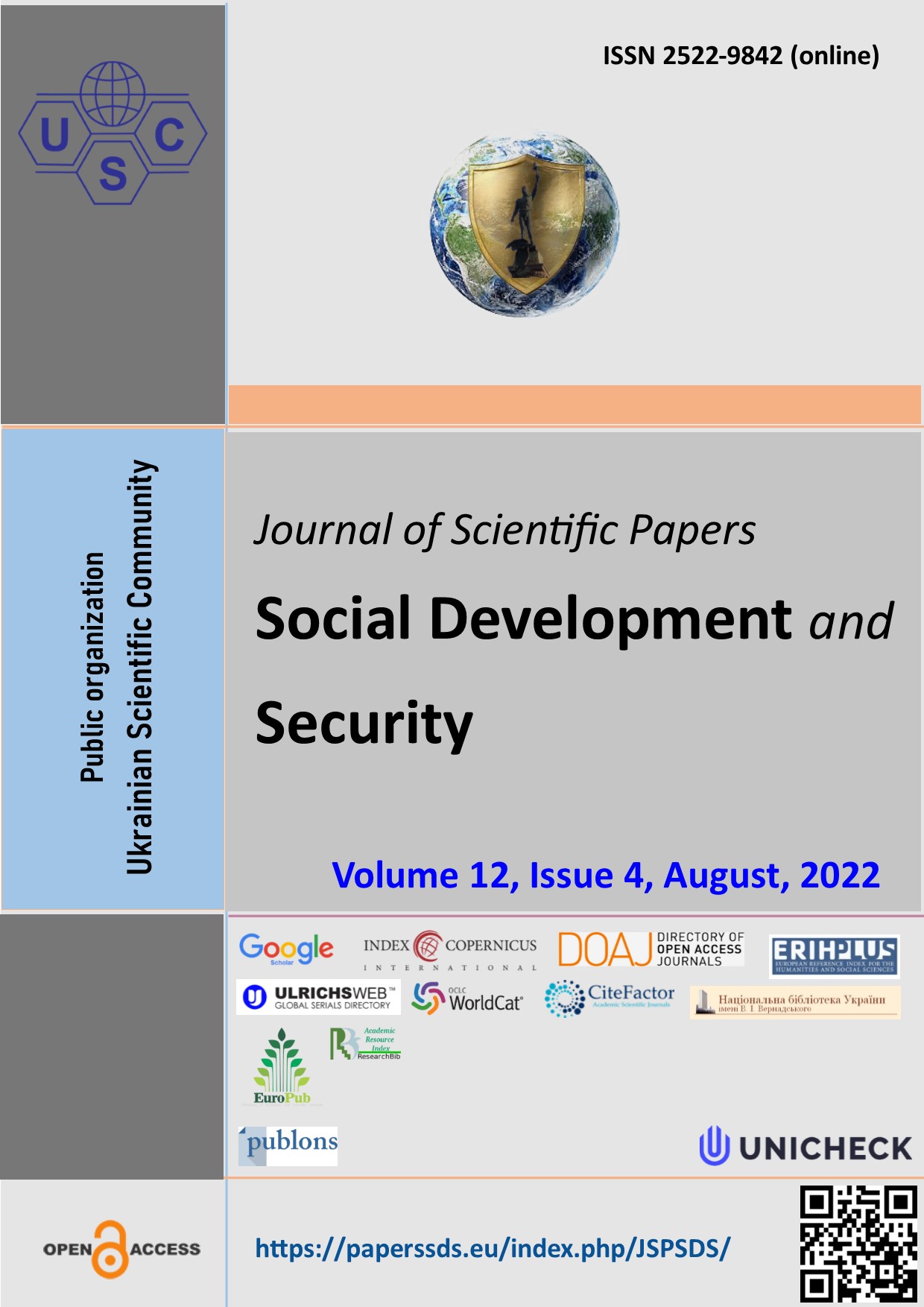Use of risk analysis methods in relation to terrorist threats at protected critical infrastructure facilities
Abstract
Purpose: on the basis of a study of the transformation of the concept of risk (relating to a protected critical infrastructure object), the characteristics of a terrorist act and terrorist threats, to consider methods of risk analysis in relation to terrorist threats on protected critical infrastructure objects.Design/Method/Approach the methods of the theory of probabilities and mathematical statistics, the theory of fuzzy sets and interval mathematics, the theory of risks and the modeling of dynamic processes were used in the performance of this work.Findings: it is shown that in relation to a protected object of critical infrastructure, risk is a measure of a quantitative, multi-component measure of danger, including the amount of damage from the impact of threats that appear in the form of technical and technological, natural and ecological, economic and psychological, social and other incidents. They manifest themselves as failures and failures, accidents and accidents, explosions and fires, collapses and disasters and lead to stopping or limiting the functioning of these objects. Then it is shown that a typical scenario of a terrorist attack consists of ten stages, and terrorist threats on protected critical infrastructure facilities are possible socially dangerous consequences of malicious actions that lead to stopping or limiting the functioning of these facilities. It was concluded that for the risk analysis of terrorist threats on protected critical infrastructure facilities, the lack of statistical data in the assessment of various threats ensured the dominance of probabilistic heuristic methods based on the use of subjective probabilities obtained through expert assessment.Theoretical implications: lies in the fact that the lack of statistical data in the assessment of various threats to protected critical infrastructure facilities ensures the dominance of probabilistic heuristic methods based on the use of subjective probabilities obtained through expert assessment.Papertype: scientific and practical.
Downloads
References
Risk – Wikipedia. Available from : https://ua.wikipedia.org/wiki/%D0%A0%D0%B8%D1%81
Orlov A.I., Pugach O.V. Approaches to the general theory of risk.
Blank I.A. Upravlinnya finansovymy ryzykamy [Financial risk management]. Kyiv: Nika-Center, 2005. 600 p.
Honcharenko, Yu.Yu.,. Divizinyuk, M.M, Ryzhkin, A.S. (2016). Osoblyvosti nadzvychaynykh sytuatsiy, shcho pryzvodyatʹ do zabrudnennya atmosfery radioaktyvnymy i otruynymy rechovynamy [Peculiarities of emergency situations that lead to contamination of the atmosphere with radioactive and poisonous substances]. Measuring and Computing Techniques in Technological Processes. No. 56. P. 132-135.
Presentation on the topic: Risk management. Available from : http://www.myshared.ua/slide/634569/
Azarenko, E., Honcharenko, Y., Divizinyuk, M, Mirnenko, V., & Syrytsia, I. (2020). Structural-logical model of emergency situation management of terrorist character and its features caused by latent electromagnetic influence on the operational staff of the guarded facility of critical infrastructure. Journal of Scientific Papers «Social Development and Security», 10(1), 177-187. DOI : 10.33445/sds.2020.10.1.18
Azarenko O.V., Honcharenko, Yu. Yu., Divyzynyuk, M. M., Konovalenko N. V. (2016). Osoblyvosti radiolokatsiynoyi informatsiyi yak zasoby zapobihannya nadzvychaynym sytuatsiyam terorystychnoho kharakteru [Peculiarities of radar information as a means of preventing emergency situations of a terrorist nature]. Legal, regulatory and metrological support of information protection systems in Ukraine., Issue 2 (32). P. 28-39.
Azarenko O.V., Honcharenko, Yu.Yu., Divizinyuk, M.M., Ozhiganova, M.I. (2018). Protection of the state's critical infrastructure from terrorist influence. Kyiv: IGNS of the National Academy of Sciences of the National Academy of Sciences, 2018. 84 p. (ISBN 978-617-7187-25-6).
Lipkan V.A. Information security of Ukraine in the conditions of European integration: “National and international security” series. Kyiv: KNT, 2006. 206 p.
Xovard B. Lazeracoustic // Optronics. Sincepress. 1991. vol. 10. №10. p. 89-100.
Audio Intelligence Devices // Product Catalog, 2012. 402 p.
Wenzel F. D6.1 – Decision-analytic frameworks for multi-hazard mitigation and adaptation, New methodologies for multi-hazard and multi-risk assessment methods for Europe, Deliverable 6.1, 2012. 34 p. Available from : http://matrix.gpi.kit.edu/downloads/MA-TRIX-D6.1.pdf.
Abstract views: 246 PDF Downloads: 235
Copyright (c) 2022 Mykhailo Divizinyuk, Volodymyr Mirnenko, Vasyl Polishchuk

This work is licensed under a Creative Commons Attribution 4.0 International License.
The authors agree with the following conditions:
1. Authors retain copyright and grant the journal right of first publication (Download agreement) with the work simultaneously licensed under a Creative Commons Attribution License that allows others to share the work with an acknowledgment of the work's authorship and initial publication in this journal.
2. Authors have the right to complete individual additional agreements for the non-exclusive spreading of the journal’s published version of the work (for example, to post work in the electronic repository of the institution or to publish it as part of a monograph), with the reference to the first publication of the work in this journal.
3. Journal’s politics allows and encourages the placement on the Internet (for example, in the repositories of institutions, personal websites, SSRN, ResearchGate, MPRA, SSOAR, etc.) manuscript of the work by the authors, before and during the process of viewing it by this journal, because it can lead to a productive research discussion and positively affect the efficiency and dynamics of citing the published work (see The Effect of Open Access).
















